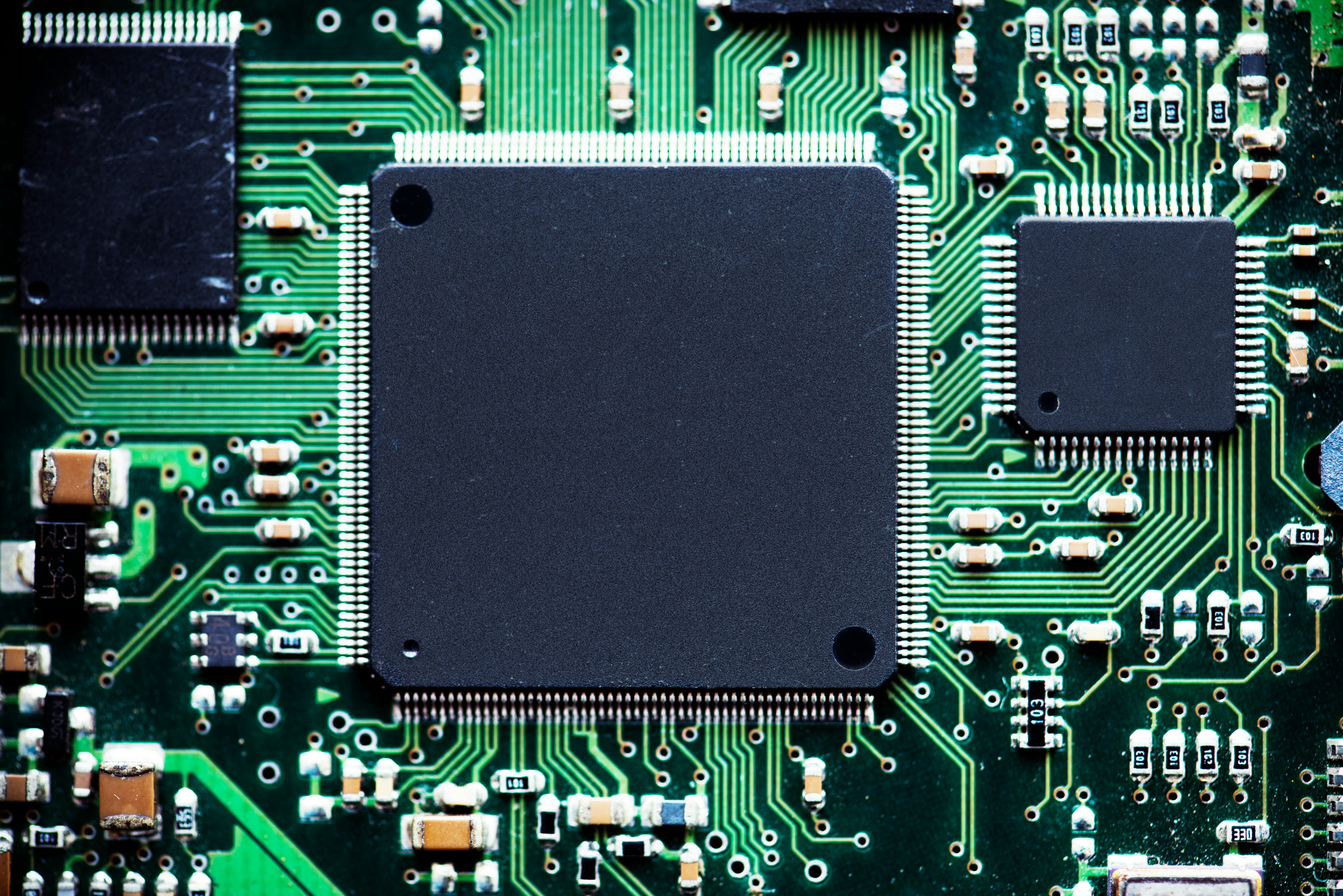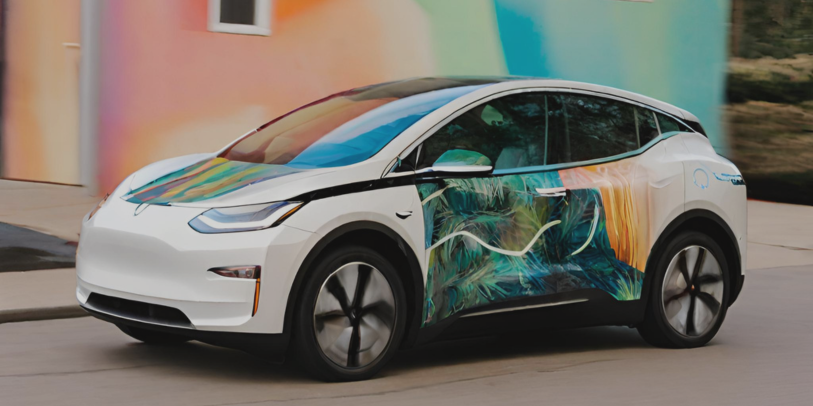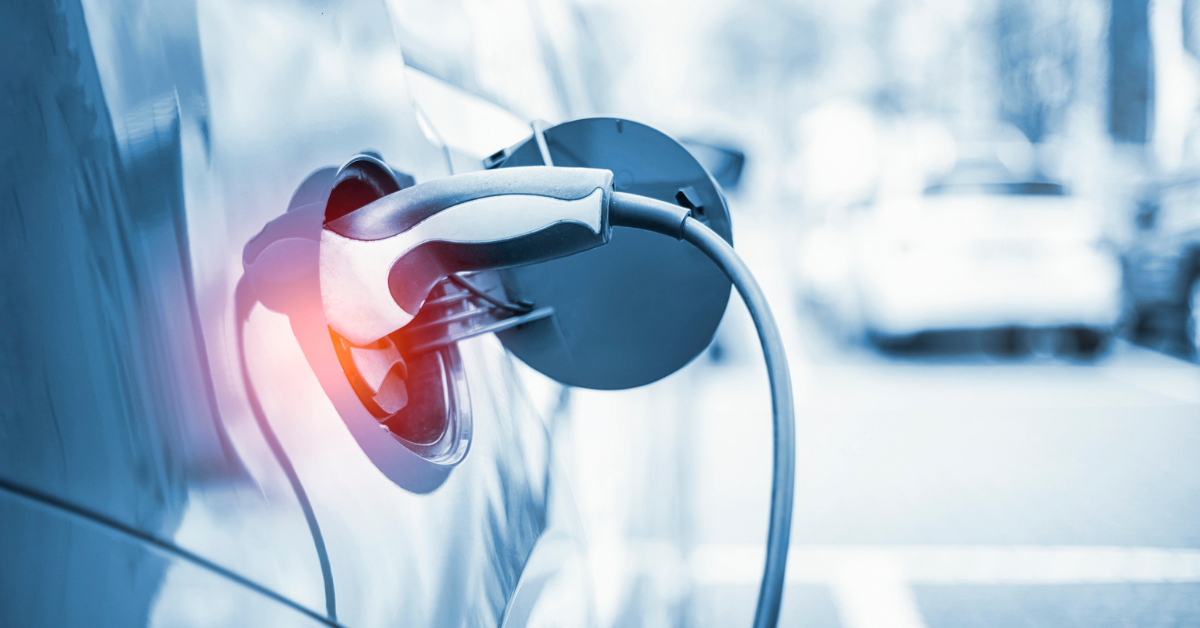E-mobility is transforming the way we think about transportation, and embedded systems are at the heart of this revolution. Embedded systems are tiny, powerful technologies that make electric vehicles (EVs) smarter, more efficient, and safer. Embedded systems are key to driving the future of e-mobility, powering all aspects of safety and performance.
In this guide, we highlight some examples of embedded systems technologies driving e-mobility and offer insight into emerging advancements and key jobs to ensure professionals can stay ahead and remain competitive.
What are Embedded Systems in E-Mobility?
Let’s start by pinpointing the role of embedded systems in e-mobility. An electric vehicle (EV) represents a remarkable shift towards modern engineering, where multiple interconnected components work in sync to deliver a seamless driving experience.
The driving force behind this process is embedded systems, which play a vital role in optimizing each component's performance and ensuring vehicles, such as cars, electric bikes, and scooters, operate efficiently.
What Are The Core Components of an EV? These Include:
- Battery Pack - Stores and supplies electrical energy needed for propulsion.
- Electric Motor - Transfers electrical energy into mechanical energy to drive the vehicle.
- Power Electronics - Manages and controls the flow of electrical power throughout the system.
- Charging System - Facilitates the recharging of the vehicle's battery.
- Vehicle Control Unit (VCU) - Oversees overall operation and ensures coordinated functioning.
Embedded systems act as the brains behind these crucial components. How? By driving their operation. Whether it is ensuring safe and optimal charging cycles or facilitating efficient energy conversion and regulating motor speed, embedded systems are the invisible force that powers electric vehicles' efficiency, safety, and performance.
Examples of Embedded Systems Technologies Driving E-Mobility
So, what are the key examples of embedded systems technologies driving e-mobility? Here are some for you to think about:
1. Battery Management Systems (BMS)
According to research, the Battery Management System Market was valued at around USD 7.91 billion in 2023 and is projected to reach USD 36.44 billion by 2032, expanding at a CAGR of 18.5%. Rapid growth is evident, highlighting the increasing reliance on embedded systems to enhance EV batteries' efficiency, reliability, and longevity.
The Role of Battery Management Systems in E-Mobility
What is the specific role of Battery Management Systems in driving E-Mobility? Roles include:
- Battery Health Monitoring - Continuously assesses the condition of the battery cells, detecting issues like overheating, overcharging, and cell degradation.
- Charge Management - Battery Management Systems optimize charging cycles, ensuring the battery is charged efficiently to extend its lifespan.
- Energy Management - By balancing the energy distribution across the battery pack, Battery Management Systems ensure even usage and prevent imbalances that could lead to failure.
- Safety Assurance - Implements protective measures, such as shutting down the system in the event of dangerous conditions, to prevent accidents or damage.
- Data Collection and Analysis - Battery Management Systems gather real-time data on battery performance, enabling predictive maintenance and informed decision-making for energy management.
- Thermal Management - Regulates the battery's temperature to maintain necessary operating conditions and prevent thermal runaway.
The Impact of Battery Management Systems
How do Battery Management Systems directly impact E-Mobility? Below are the key impacts:
- Enhanced Battery Longevity - By managing charge cycles and monitoring cell health, BMS extends the life of EV batteries, reducing the frequency of replacements.
- Increased Reliability - Ensures consistent battery performance, which directly contributes to the reliability and safety of electric vehicles.
- Improved Energy Efficiency - Optimizes the use of stored energy, leading to longer driving ranges and better overall vehicle efficiency.
- Safety Enhancements - Battery Management Systems reduce the risk of battery-related failures and accidents, adding to the overall safety of e-mobility solutions.
- Cost Efficiency - These embedded systems lower maintenance costs and prolongs battery life, resulting in cost savings for EV owners and manufacturers.
- Support for Advanced Features - Enables the integration of smart charging, vehicle-to-grid (V2G) capabilities, and other advanced e-mobility technologies.
2. Motor Control Units (MCUs)
One of the most impactful embedded systems driving the e-mobility sector is Motor Control Units (MCUs). Behind the scenes, they manage motor functions to enhance efficiency and performance. Essentially, MCUs keep everything running smoothly, making them crucial to the future of e-mobility.
The Role of Motor Control Units in E-Mobility
Motor Control Units are essential for managing the performance and efficiency of e-mobility solutions. Here’s how they contribute:
- Precision Control - MCUs regulate motor speed and power delivery to ensure optimal vehicle performance.
- Efficiency Enhancement - By optimizing the use of electrical energy, MCUs improve overall energy efficiency and extend battery life.
- Seamless Operation - Facilitates smooth acceleration and braking by providing fine-tuned motor control.
- Integration - Works in collaboration with other embedded systems, like Battery Management Systems (BMS) and Vehicle Control Units (VCUs).
- Fault Management - By detecting and managing motor faults, MCUs ensure reliable performance and safety.
The Impact of Motor Control Units
How do Motor Control Units influence the overall effectiveness of e-mobility solutions? Take a look below:
- Improved Performance - Delivers precise power and speed adjustments, enhancing vehicle acceleration and driving dynamics.
- Increased Energy Efficiency - MCUs maximize battery life by optimizing energy use and reducing waste.
- Enhanced Driving Experience - Provides smoother vehicle operation, minimizing vibrations and noise.
- Extended Range - By managing regenerative braking to recover energy during braking, MCUs extend the driving range.
- Effective Thermal Management - MCU technology controls motor temperature to prevent overheating and ensure consistent performance.
- Safety and Reliability - Implements safety measures and fault detection to protect the motor and vehicle from damage.
3. Charging Station Controllers
When it’s time to charge your electric vehicle, Charging Station Controllers are there to manage the entire process. Whether it's handling everything from power distribution to user authentication, they play an essential role in supporting the infrastructure required to drive the future of e-mobility.
The Role of Charging Stations in E-Mobility
Curious as to how charging stations contribute to e-mobility solutions? Here are some key examples:
- Power Management - Charging stations regulate the distribution of electrical power to ensure efficient and stable charging.
- User Authentication - Verifies user credentials and manages access to the charging station.
- Communication - By facilitating communication between the charging station and the vehicle, stations manage charging protocols and data exchange.
- Monitoring and Control - Monitors the charging process, including energy usage and station status, and adjusts operations as needed.
- Safety Features - Charging technology implements safety protocols to prevent electrical faults, overheating, and other potential hazards during charging.
The Impact of Charging Stations
There is no doubt charging stations broadly impact the e-mobility sector. Here, we provide some examples of how they contribute to the industry.
- Enhanced Charging Efficiency - Optimizes power distribution and management, leading to faster and more efficient charging.
- Increased Accessibility - Supporting the widespread adoption of EVs by delivering a reliable and user-friendly charging infrastructure.
- Improved User Experience - Streamlines the charging process with features like authentication and real-time status updates, making it easier for people to charge their vehicles.
- Safety Assurance - Charging stations ensure safe operation of charging stations, minimizing the likelihood of accidents and damage to equipment.
- Infrastructure Growth - By contributing to the expansion of charging networks, charging stations support the growth and adoption of electric vehicles across different regions.
4. Vehicle to Grid Technology (V2G)
Next, let’s explore the significance of Vehicle to Grid Technology. Vehicle-to-Grid (V2G) technology revolutionizes how electric vehicles (EVs) interact with the power grid. By allowing EVs to not only draw power from the grid but also supply energy back to it, V2G supports the wider integration of renewable energy sources.
The Role of Vehicle to Grid Technology (V2Gs) in E-Mobility
- Energy Exchange Between Vehicles and Grid - V2G technology allows electric vehicles to return stored energy to the grid, providing a flexible energy source.
- Grid Support - Helps stabilize the power grid by managing energy supply and demand, especially during peak usage times.
- Optimized Charging - Facilitates smart charging by charging vehicles during off-peak hours and discharging during times of high demand, improving overall grid efficiency.
- Integration with Renewable Energy - V2Gs support the integration of renewable energy sources by storing additional energy and supplying it back to the grid when required.
- Reduced Energy Costs - With reduced energy costs, EV owners can earn income or save on energy costs by selling remaining energy back to the grid.
The Impact of Vehicle to Grid Technology
- Increased Grid Reliability - Improves grid stability and reliability by providing an additional energy source during high demand.
- Environmental Benefits - V2Gs reduce reliance on fossil fuels by better utilizing renewable energy, leading to lower carbon emissions.
- Economic Incentives for EV Owners - Financial incentives enable EV owners to participate in energy markets and sell unused electricity.
- Enhanced Energy Efficiency - V2G technology means more efficient use of energy resources by optimizing when and how energy is consumed and stored.
- Support for Sustainable Energy - Encourages using renewable energy and sustainable practices in the broader energy ecosystem.
The Future and Importance of Embedded Systems Jobs in E-Mobility
As we move towards greener and smarter transportation, embedded systems are key to making it happen. It is no secret that rising advancements in AI and Machine Learning are starting to reshape how we get around. With the industry growing fast, there’s a rising demand for professionals skilled in embedded systems, leading to a range of exciting career opportunities.
So, let’s explore future areas of innovation in embedded systems and some of the essential roles key to driving change:
AI and Machine Learning
AI and machine learning are the next cutting-edge technologies in the embedded systems industry. While embedded systems perform tasks, they also learn and adapt as they go. Whether it's in self-driving cars or industrial robots, AI-driven embedded systems are shaping the future of e-mobility.
Potential embedded systems jobs in AI and Machine Learning
Here are the key embedded systems jobs in AI and Machine Learning:
- Machine Learning Engineer - Roles and responsibilities include inputting machine learning algorithms into embedded systems, making them capable of more innovative, real-time decisions.
- AI Embedded Systems Software Engineer - This role involves bringing AI into the heart of embedded systems, tailoring them for specific tasks and improving their overall performance.
- Data Scientist - You’ll dive deep into the data generated by these systems, refining AI models and pushing the envelope of system intelligence.
Impact on Sustainability
While it is true that embedded systems might not always be in the spotlight, they’re playing a significant role in making our world more sustainable. From cutting down on energy use to better managing renewable resources, these systems help create a cleaner world.
Potential Embedded Systems Jobs in Sustainability
Below are some of the most impactful embedded systems jobs in sustainability:
- Energy Embedded Systems Engineer - Professionals will design systems that help optimize energy use, whether it’s in intelligent grids or managing renewable energy sources like solar and wind.
- Sustainability Consultant - In this role, you'll work with businesses to implement embedded systems that drive their sustainability goals, like cutting energy consumption and minimizing waste.
- Environmental Monitoring Specialist - Your focus will be on developing and maintaining systems that monitor environmental conditions, helping protect natural resources.
Autonomous Driving and Embedded Systems
When it comes to autonomous driving, embedded systems make it all possible. Systems process mountains of sensor data, make split-second decisions and ensure that the vehicle stays safe on the road. As self-driving tech begins to move from sci-fi to reality, embedded systems engineers are crucial to this transformation.
To put it into perspective, recent research suggests that by 2035, 40% of new cars in the UK have the potential to have self-driving capabilities. This statistic provides a clear idea of the rapid growth of the autonomous driving industry, highlighting a higher demand for professionals skilled in this area.
Potential Embedded SystemsJobs in Autonomous Driving
Essential embedded systems jobs in autonomous driving include:
- Autonomous Embedded Systems Engineer - Professionals will design and fine-tune the systems that let autonomous vehicles "see" and navigate their surroundings safely.
- Sensor Integration Engineer - This role involves making sure sensors like cameras and radar work seamlessly with the vehicle’s systems to give it a full understanding of its environment.
- Safety Systems Engineer - Your mission will be to ensure that every embedded system in an autonomous vehicle is up to the highest safety standards.
To learn more about embedded systems' role in the automotive industry specifically, discover our insightful guide - What Role Do Embedded Systems Play in Automotive Development?
Wrapping Up Key Technologies in Embedded Systems for E-Mobility
Embedded systems are at the core of the e-mobility shift, quietly powering the technologies that make electric vehicles smarter. As the transportation industry continues to change, these systems will only become more important in how we drive and interact with vehicles. From keeping batteries healthy to making autonomous driving possible, embedded systems are central to the future of e-mobility.
With AI and machine learning now being introduced into these systems, we're seeing vehicles that can adapt and learn over time. Advancements mean transportation is also becoming more sustainable by improving energy efficiency. As more people and businesses turn to electric vehicles, the need for professionals who understand embedded systems is growing, leading to some great opportunities in the field.
In short, embedded systems are a key part of e-mobility. Whether you're looking to work on AI-driven vehicles, help advance sustainability, or ensure the safety of autonomous cars, there are plenty of exciting paths to explore in this evolving industry.
Connecting Embedded Systems Talent to Global Businesses
Are you looking for your next career opportunity in embedded systems? Our consultants have the means to place candidates into their perfect roles. We operate in 42 countries globally, and Amoria Bond has become one of the sector’s most esteemed recruitment agencies. With a proven track record in connecting candidates with some of the industry’s most accomplished businesses, we take pride in outstanding recruitment experiences.
Contact us today to learn how we can support you in your job search.








